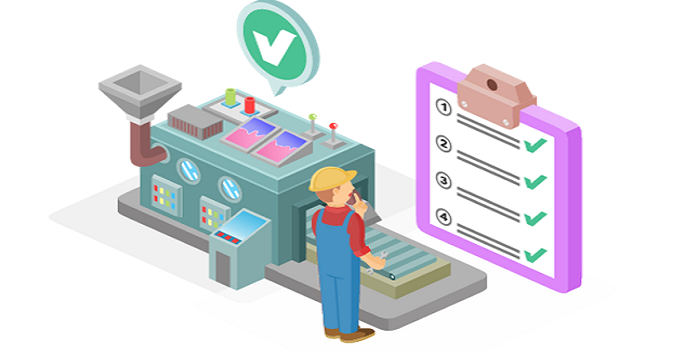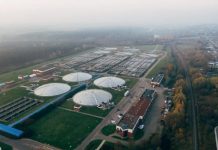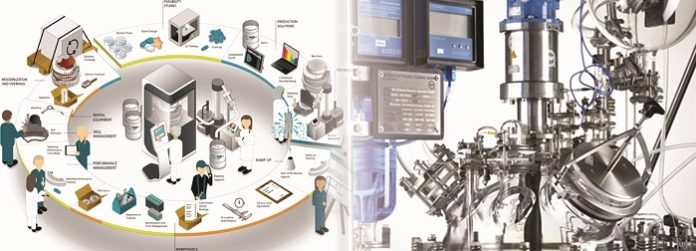Introduction
Across all sectors and industries, today’s business environment doesn’t leave any room for stagnation and staleness. In fact, businesses not in a state of constant growth and expansion are all arguably considered failing or, at best, old-fashioned and too conservative. Therefore, being successful in such an environment necessitates a will for growth and a practical plan and infrastructure enabling it to realize that will.
In this article, we’ll discuss why chemical businesses in particular may not grow as they should and how ERP helps keep check on raw materials, finished goods and inventory. Listing down the challenges and the possible solutions extended by ERP for the same.
1. Units of Measures: In any chemical company , the raw material used can be measured in various units such as Kilograms, litres, numbers & even Bars. It is quite often that they are purchased in one unit of measurement and consumed in another (eg: formulation of a tablet) Hence the accounting of materials needs to be done in more than one unit of measure. The conversion between different units of measures had to be considered.
The right ERP solution will record the total material used and required for that process with the built in conversion calculator. The intelligent software will also predict the amount of material required to be fed in.
2. Batch tracking and Shelf Life: Mostly chemical industries produce products in the batches. The batches are required from the point of purchase to production and consumption. The inventory evaluation is also based on the batches. Further the batches would be associated with the attributes like the expiry date of the products.
ERP Solution – The tool will track the inventory expiry date since it is a regulatory requirement since there will be manufacturing date and expiry date already mentioned at the time of production.
3. Pricing: Pricing of the finished / semi finished products in not always based upon the cost of materials or market determined. Often additional processing is required to achieve materials of higher quality and associated costs very. Multiple end items may require that the cost of the entire process to be split based upon a percentage split of cost. The production of all items – (intermediates, semi finished goods, finished goods etc) is taken up batch wise. Hence the costs for various activities need to be consolidated batch wise.
4. Multiple versions of Formulations: It is possible that the finished material is produced according to the different rations of raw materials or some different raw materials are used in the process. The formulation definition has to be flexible to accommodate multiple versions.
5. Damaged Stocks Management: For the sake of profitability, the management of the damaged stocks plays a critical both in terms or value as well in terms or logistics. The organization needs to manage & monitor the quantity & value of it’s damaged stock. The ERP system needs to track the damaged stocks at the various ware houses, locations etc.
6. Warehousing and processing: The logistic requirements of the industry require stocks to be maintained at various locations (ware houses, stock points etc). This obviously puts additional pressure on the supply chain as well as on Working capital management. Further, the need to maintain the stocks as semi finished goods adds that extra work on the ERP & Supply Chain planning engine. Management & control of stocks across the value chain is an essential.
ERP automates and mechanics these day-to-day tasks and missions, freeing up valuable time for the workforce to be in a position to more efficiently contribute to the growth and expansion of the organization. They’ll be doing what they should be undertaking – focusing on the core pillars of the business toward generating maximum revenue.
Legacy Infrastructure
It’s been decades since the advent of ERP (Enterprise Resource Planning) systems in businesses as tools that help companies efficiently manage resources and access helpful insight and information on overall performance and direction. However, being fixated on one or a couple of aspects of their functions has led their users into treating them as mundane and routine parts of their day-to-day work.
 Most companies have some form of legacy automation or ERP system in place. Some of these systems are still being used and updated regularly for the benefit of the organization’s requirements. But many of them have slow and unnecessary trouble-making software that’s near useless, if not completely obsolete.
Most companies have some form of legacy automation or ERP system in place. Some of these systems are still being used and updated regularly for the benefit of the organization’s requirements. But many of them have slow and unnecessary trouble-making software that’s near useless, if not completely obsolete.
The fact of the matter is, if companies were to continue utilizing their legacy ERP systems without any changes, their future would be more of the same, ho-hum business as usual, without any prospect for growth or any new development. In order to achieve meaningful advancement in any industry, it’s vital to truly comprehend the requirements of the day in your sector and act compliant with those needs. Replacing the old system with an agile ERP capable of solving problems forthwith is critical to reaching sustainable business growth.
Assimilation & Synergy Among Departments
An ERP solution’s primary task is to create a shared space where all departments inside the business can work together as an efficient unit. Timely and well-directed access to the flow of tasks and information at all times helps all the components of an organization to function seamlessly towards the clear-cut objectives obvious to all members.
This objective connection and assimilation of tasks on a unified and comprehensive platform will also help executives to acquire a more transparent view of their organization at all times, providing them with a valuable standpoint from which decision-making can become significantly less challenging.
Helpful Insights in Real-Time
Working with a reliable ERP that covers all aspects of a business provides decision makers with the opportunity to accumulate valuable information. This data will then, in turn, help assess and understand not only the status of ones own business but also the requirements of clients and the areas where one needs to put more work.
Even though many organizations are more than prepared to spend significant chunks of their development budget on studies to obtain insights into their business, with an efficient ERP, one will have at one’s disposal all the requisite information for growth. The ERP will also assist in monitoring and evaluating the degree of success (or lack thereof) of plans and objectives throughout the process.
In fact, probably the most valuable takeaway of an ERP system implementation is the organization’s leaders will likely have a more holistic understanding of their company and how it works, where it’s headed, and how to plan and execute based on its roadmap.
Keeping In Touch At All Times
A significant takeaway from the global COVID-19 pandemic for all business leaders has been to understand the need for a comprehensive system enabling them to keep track of how each task is being handled. ERPs solve this issue by providing executives with the means to be in the know at all times, empowering them to make informed and timely decisions to enhance the growth of their business.
Implement ERP & Start Your Growth Now!
It’s safe to state growth for any organization is only achievable through practical planning, efficient management and systemic monitoring. ERP helps businesses grow by freeing up their time, resources, etc., allowing them to focus on the core aspects of their business toward generating maximum revenue.
Article credit – www.imtssolutions.com
































